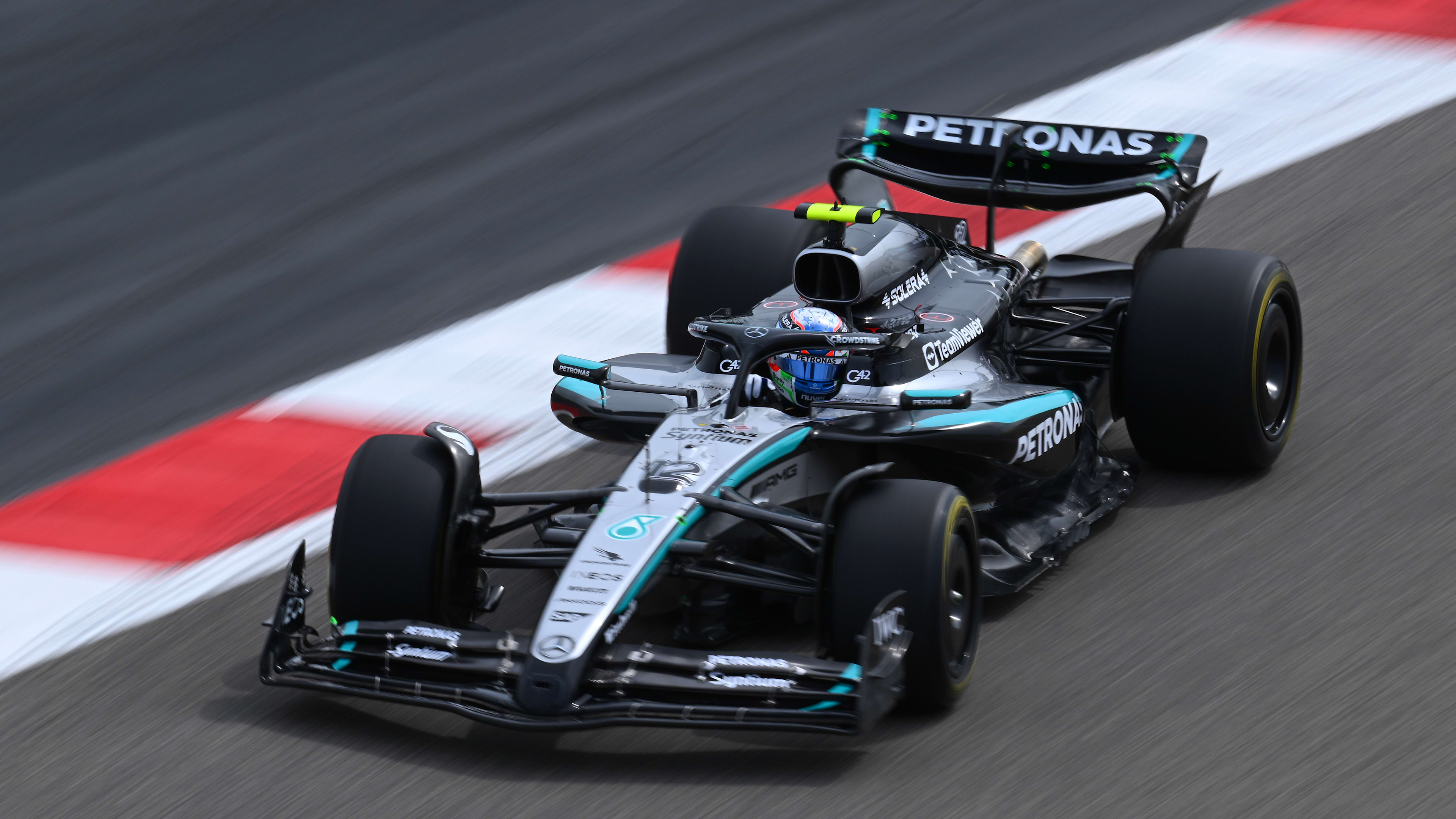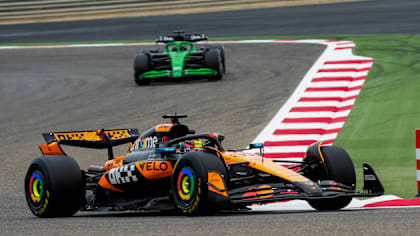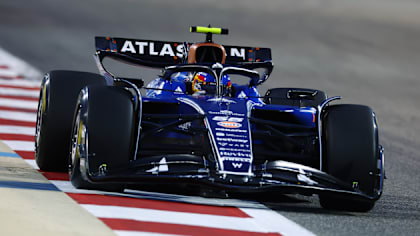
Feature
Still all to play for - team-by-team mid-season review
Share

From commanding race victories to dynamic rookie performances, team mate squabbles to hairy crashes, and emotional lows to thrilling on-track battles - the first half of the season had a bit of everything. As the teams enjoy a well-earned summer break, we take a team-by-team look at the action so far - and look ahead at what’s to come…
Mercedes - 383 pts (1st)
Lewis Hamilton: 202 pts (1st); Nico Rosberg: 181 pts (2nd) Qualifying head-to-head: 9-1 (Hamilton); Race head-to-head: 7-3 (Hamilton)
Having dominated last year and shown ominous form in pre-season testing, Mercedes entered 2015 as red-hot favourites - and right from the off they lived up to that tag. The question was: would things be as tight between Lewis Hamilton and Nico Rosberg as before?
The answer, at least initially, was no, as Hamilton, seemingly riding the wave of his championship success, swept sublimely to four poles and three victories in the opening four races. Rosberg, by contrast, looked helpless in his bid to stem the tide, the strain appearing to show when he publically vented his frustration in China after he felt Hamilton had deliberately compromised his race strategy.
But just as the doom-mongers were beginning to write the German off he forced himself back into title contention with a superbly judged win in Spain followed by a fortuitous victory - at Hamilton’s expense - in Monaco. Mojo back, it’s been nip and tuck between the two rivals since then, with Hamilton ahead in Canada, Rosberg seizing the initiative in Austria and Hamilton regaining control in Britain.
But in Hungary there was a reminder that car advantage or not, the Silver Arrows duo are not the only men in the title hunt, and if they throw points away in the second half of the season like they did in Budapest, Sebastian Vettel will be there to profit. Will the title battle go down to the wire like last year? It certainly looks that way at the half-way point.
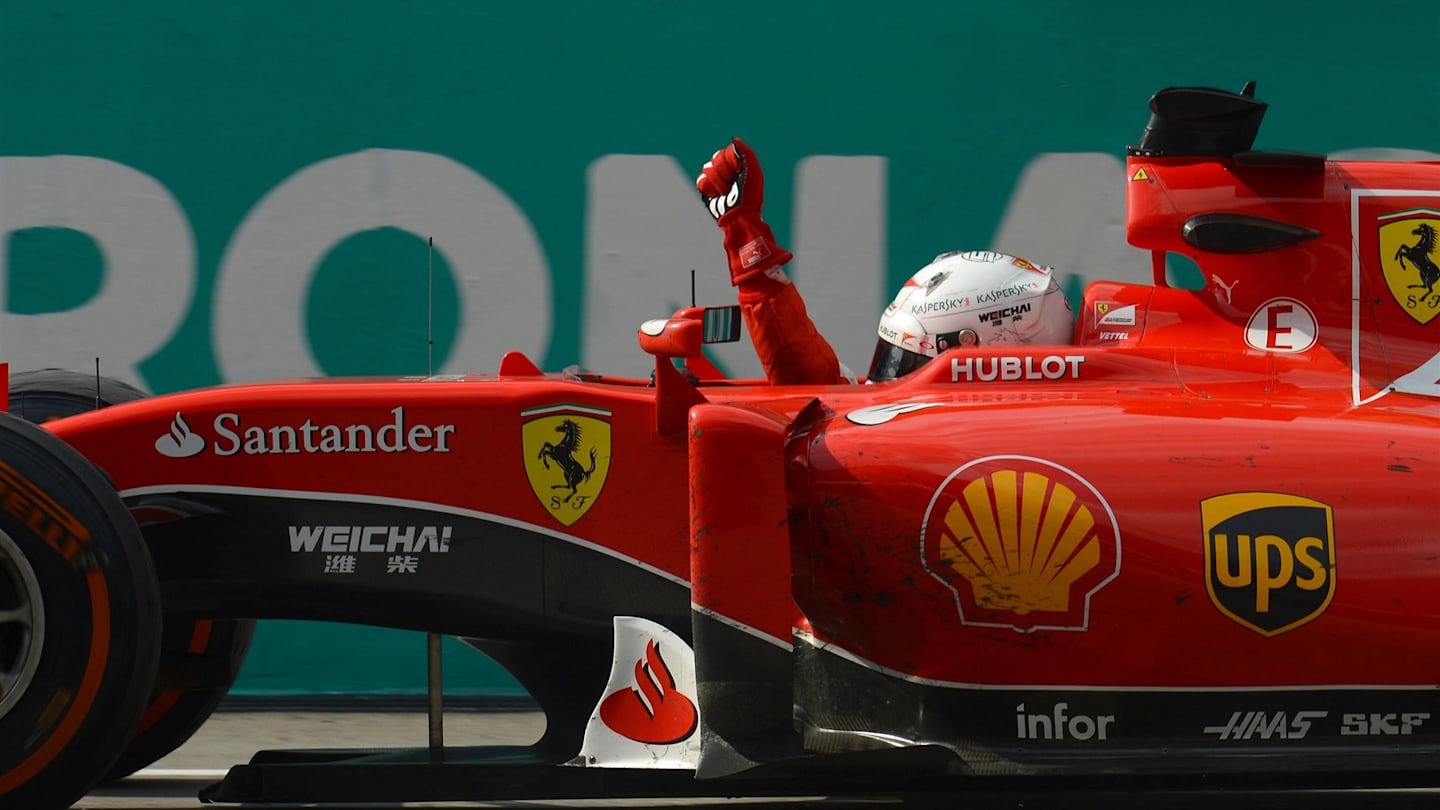
Race winner Sebastian Vettel (GER) Ferrari SF15-T crosses the line Formula One World Championship, Rd2, Malaysian Grand Prix, Race, Sepang, Malaysia, Sunday 29 March 2015.
Ferrari - 236 pts (2nd)
Sebastian Vettel: 160 pts (3rd); Kimi Raikkonen: 76 pts (5th) Qualifying head-to-head: 8-2 (Vettel); Race head-to-head: 5-2 (Vettel)
Ferrari rose from the ashes of a disastrous 2014, and banished a winter of discontent, almost from the outset of the new season. Four-time world champion Sebastian Vettel was the catalyst, slipping seamlessly into the role of team leader and triumphing in only his second race in red. The message was clear: Ferrari were back.
Vettel’s unerring brilliance extended to five podiums in the opening six races, to put him firmly in title contention. Canada and Austria proved less happy hunting grounds, with Ferrari sliding slightly amid talk of fuel flow trickery. But the slump was not lasting - Vettel was back on the podium in Silverstone and then reigned supreme in Hungary, unflappable in an otherwise wild and chaotic race. Victory lifted him to within 42 points of the championship lead - the perfect way to finish his first half season with the Prancing Horse.
Raikkonen’s year hasn’t followed the same trajectory. Unable to switch on his tyres in quite the same fashion as Vettel, he has struggled in qualifying - and that has had a knock-on effect on his race performances. A podium in Bahrain - which was very nearly a victory - proved his underlying pace hasn’t deserted him, but minor errors and a swathe of cruel luck, most recently at the Hungaroring, have held him back. Rightly or wrongly, rumours continue to swirl about his future with the team.
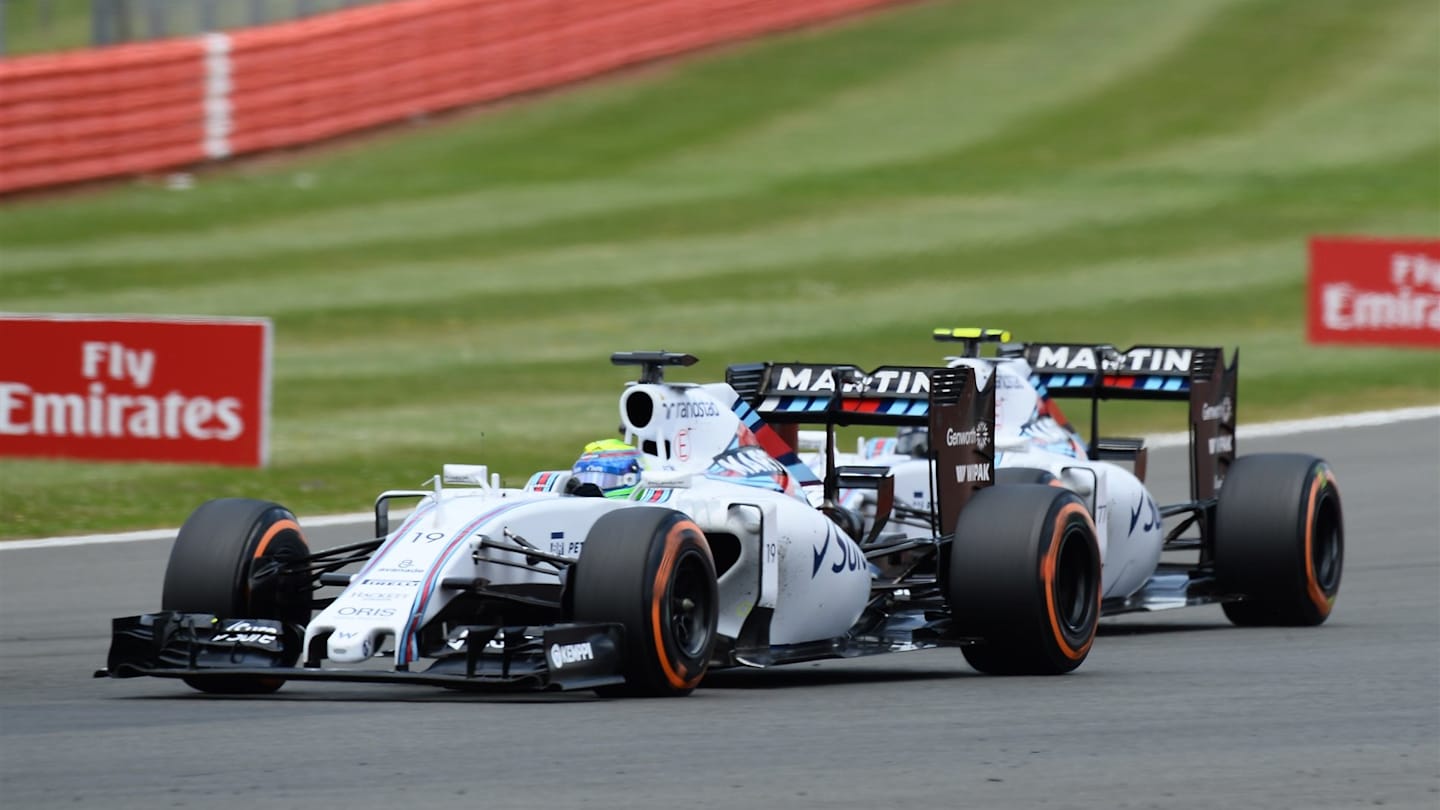
Felipe Massa (BRA) Williams FW37 battles with Valtteri Bottas (FIN) Williams FW37 at Formula One World Championship, Rd9, British Grand Prix, Race, Silverstone, England, Sunday 5 July 2015.
Williams - 151 pts (3rd)
Valtteri Bottas: 77 pts (4th); Felipe Massa: 74 pts (6th) Qualifying head-to-head: 6-4 (Massa); Race head-to-head: 5-4 (Bottas)
After a strong finish to last season - which saw them take more points that every team bar Mercedes over the final three Grands Prix - Williams had hoped to come out of the gate flying in 2015, but unfortunately the early races proved to be a bit of a let-down. Instead of making up ground on the Silver Arrows, the Grove-based team slipped further back, and were even leapfrogged by a resurgent Ferrari for second place in the pecking order.
The main problem, at least initially, for Felipe Massa and Valtteri Bottas (who also had to overcome a back injury that forced him to sit out the Australian season-opener) was Williams’ inability to get the tyres working as well as other teams and the FW37’s struggles on slow-speed tracks. These problems were highlighted at Monaco when the team slumped from 4th and 6th at high-speed Spain to 14th and 15th on the Principality’s twisting streets.
However, there have been significant signs of progress since then, with the team bringing a raft of new developments to every race. Bottas handed the team their first podium finish of the year in Canada, and as if to underline how well-matched they’ve been all season, Massa followed suit with one of his own in Austria. Sir Frank’s team might have even taken a win in Britain had they not have been so indecisive with team orders in the early stages. The question is, which Williams will we see more of in the second half? The squad that gave Mercedes a real run for their money at Silverstone, or the one that couldn’t even make the points at the next race in Hungary? With the tracks coming up, Williams will hope the former - but much of it depends if they can keep pace in the development race. If they can, Ferrari should be looking over their shoulder.
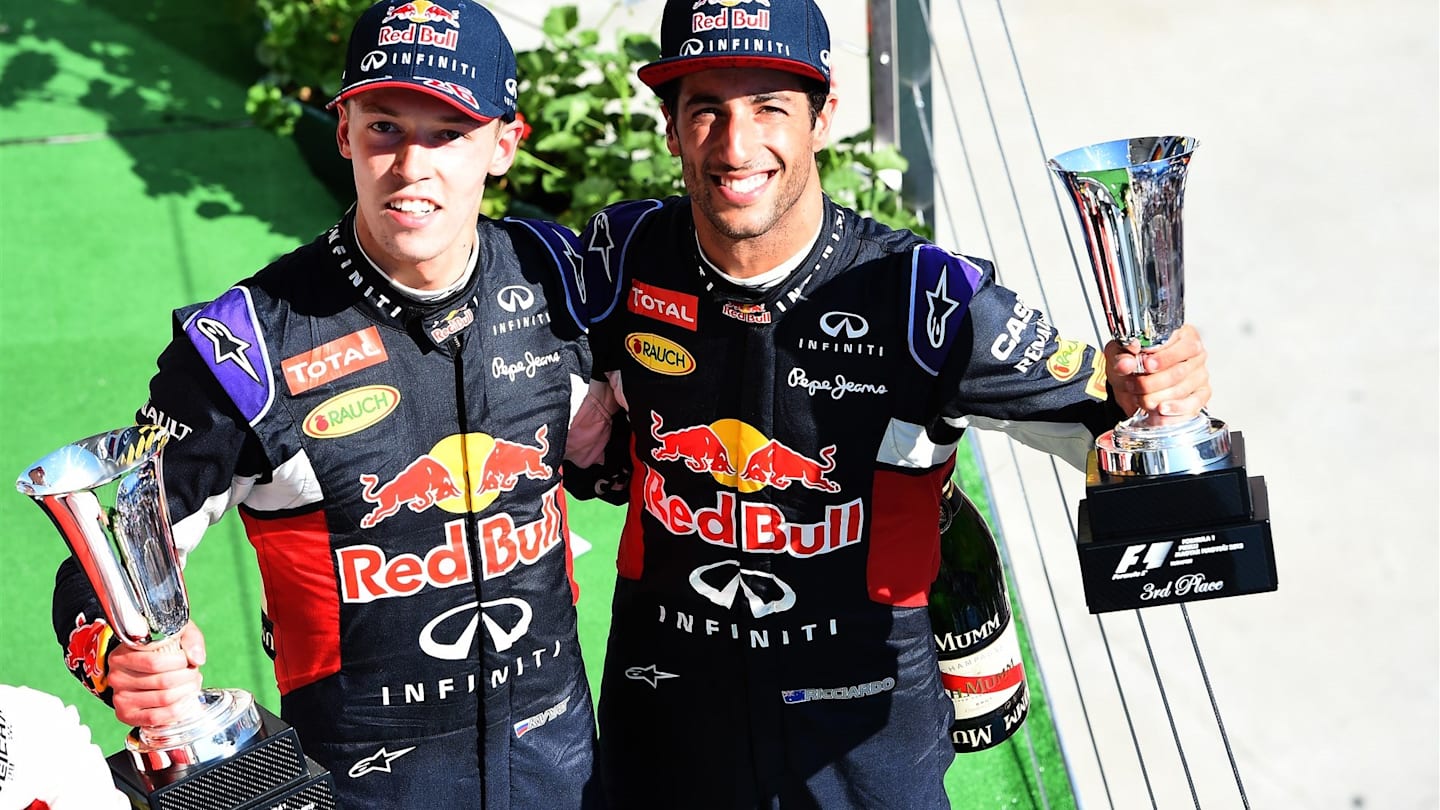
Daniil Kyvat (RUS) Red Bull Racing and Daniel Ricciardo (AUS) Red Bull Racing celebrate on the podium with the trophies at Formula One World Championship, Rd10, Hungarian Grand Prix, Race, Hungaroring, Hungary, Sunday 26 July 2015.
Red Bull - 96 pts (4th)
Daniel Ricciardo: 51 pts (7th); Daniil Kvyat: 45 pts (8th) Qualifying head-to-head - 6-4 (Ricciardo); Race head-to-head - 4-3 (Kvyat)
Before Silverstone, Red Bull’s report card would have looked markedly different. But after a very shaky start, there are finally signs the four-time champions are finding something approaching their old selves.
It had all looked very different. By round three in China, the team had collected just 13 points - 106 behind Mercedes, and only just enough for fifth in the constructors’ standings. Some pointed the finger at engine partners Renault, not without cause - but there were issues on the chassis side too, which the team appear to now be getting a handle on.
The problems appear to centre around new regulations which prevent teams from running as low to the track as they had previously - which had a pronounced effect on the concept, and therefore performance, of the RB11.
The in-season Austria test seemed to provide the platform for a turnaround, with Daniil Kvyat breaking into the top seven in qualifying and the race next time out at Silverstone. And in Hungary, the upward trend continued - Kvyat claimed his first F1 podium in second, while Daniel Ricciardo was in the hunt for victory and finished third even with a late pit stop for damage. The race was also confirmation that Ricciardo remains a class act, despite one or two blips this year. As for Kvyat, the podium vindicated Red Bull’s belief in the young Russian - and their warning that he needed to up his game after a slow start.
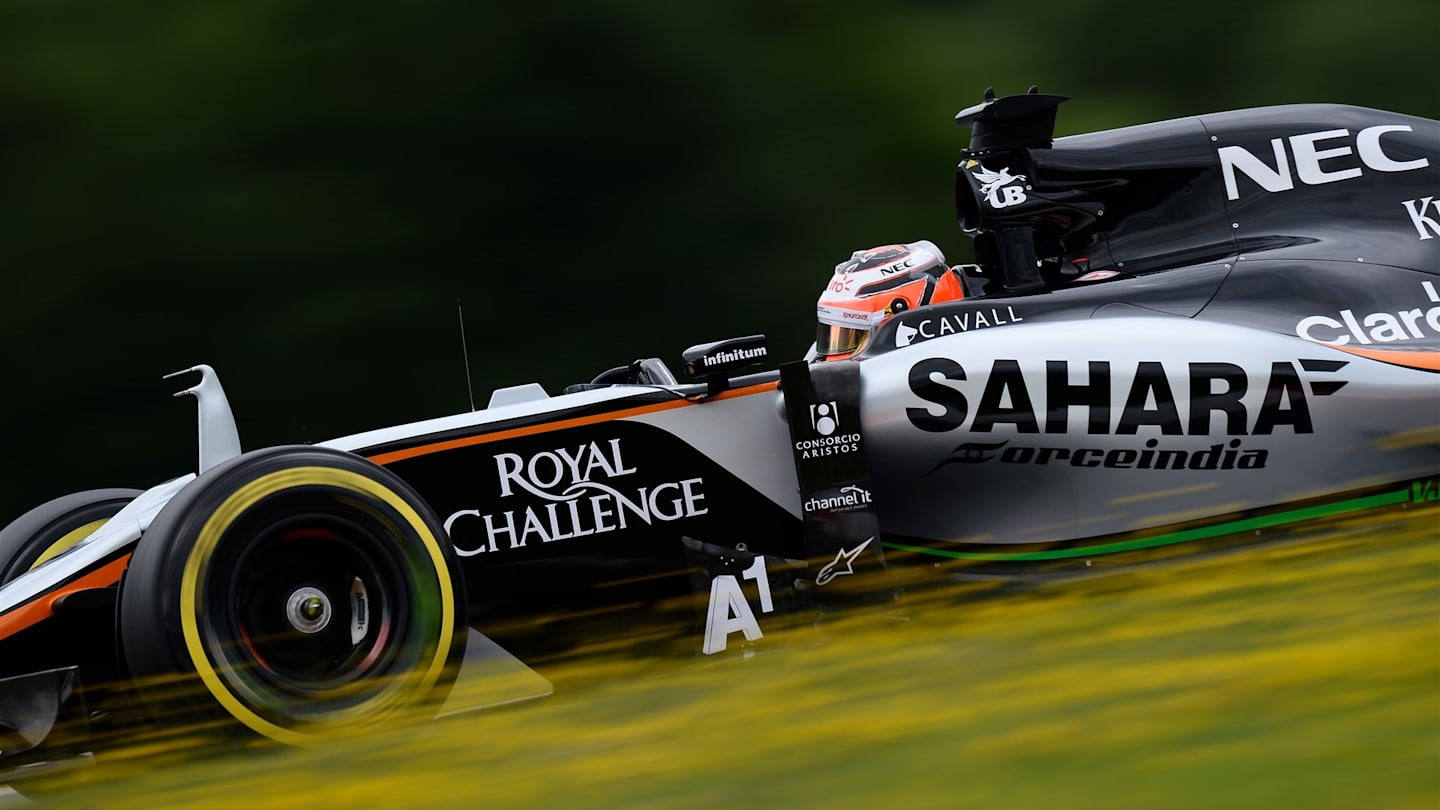
Nico Hulkenberg (GER) Force India VJM08 at Formula One World Championship, Rd8, Austrian Grand Prix, Practice, Spielberg, Austria, Friday 19 June 2015.
Force India - 39 pts (5th)
Nico Hulkenberg: 24 pts (9th); Sergio Perez: 15 pts (13th) Qualifying head-to-head: 7-2 (Hulkenberg); Race head-to-head: 4-4
When Sergio Perez warned that Force India were braced for a painful start to the 2015 season, it was for good reason. The Silverstone-based team - sixth in 2014 - only got their new car on track on the second day of the final pre-season test at Barcelona, meaning Perez and team mate Nico Hulkenberg had just three days to put it through its paces before flying to Australia.
But despite that inauspicious start, the ever-reliable squad have enjoyed a more than respectable first half of the year, with the evenly matched Hulkenberg and Perez proving once again to be one of the most consistently dependable - and dependably quick - driver line-ups on the grid.
Solid reliability - and the unreliability of others - was a key ally in the early stages when pace was hard to find, helping the team to an unexpected double points score at round 1 in Melbourne. But it wasn’t until Perez’s excellent seventh in Monaco that the team began to consistently score points and climb the table. A fine sixth followed for Hulkenberg in Austria who, newly re-energised from victory in the Le Mans 24-hours, then led Perez in another double points score in Britain with the team’s long-awaited - and seemingly much more competitive - B-spec machine.
Despite a worrying wobble in Hungary - when failures pitched both drivers into big accidents - it seems likely that with the revised car at their disposal Hulkenberg and Perez will continue to be perennial mid-to-lower top-ten points scorers over the second half of the season - vital if Force India are to keep principal rivals Lotus and Toro Rosso at bay.
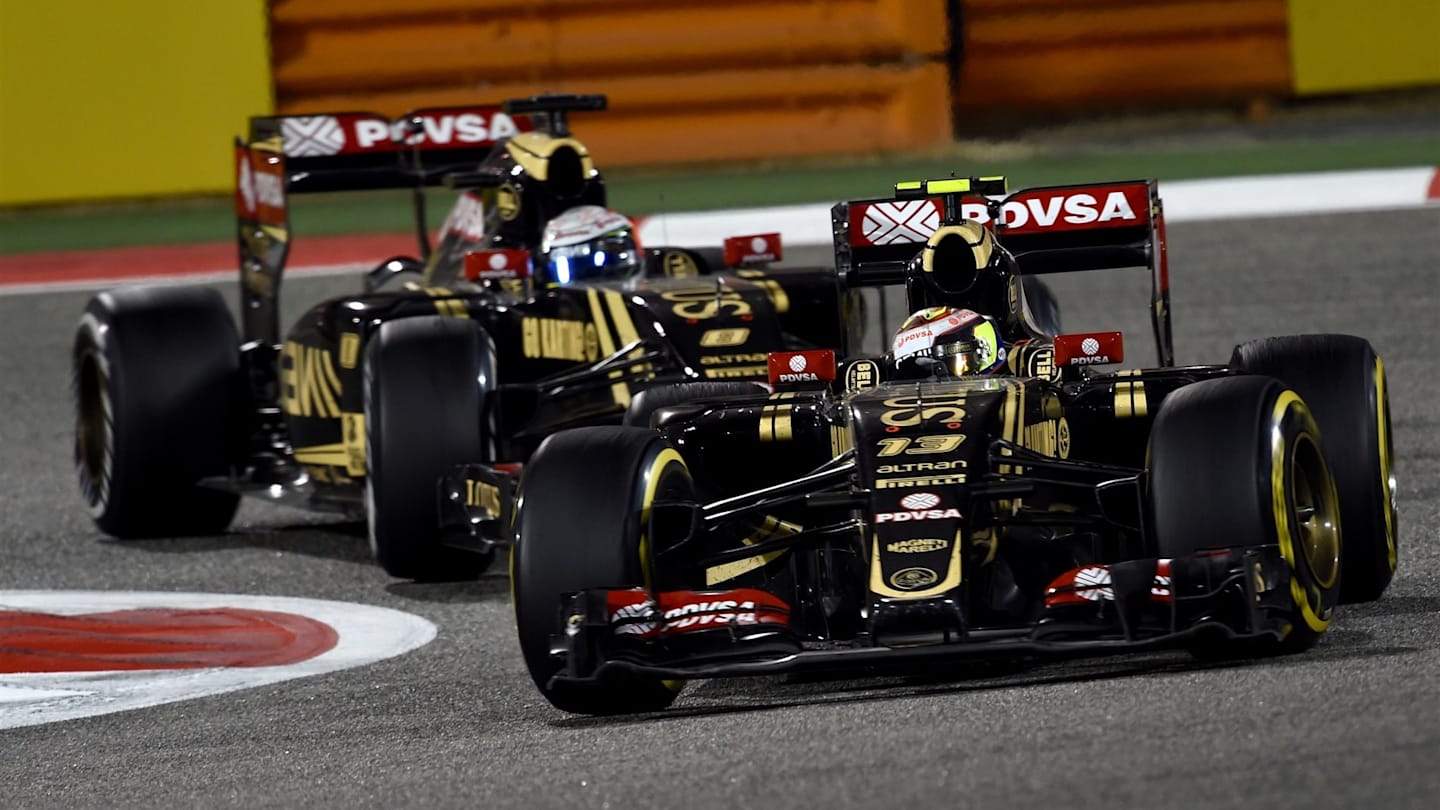
Pastor Maldonado (VEN) Lotus E23 Hybrid leads Romain Grosjean (FRA) Lotus E23 Hybrid at Formula One World Championship, Rd4, Bahrain Grand Prix Race, Bahrain International Circuit, Sakhir, Bahrain, Sunday 19 April 2015.
Lotus - 35 pts (6th)
Romain Grosjean: 23 pts (10th); Pastor Maldonado: 12 pts (14th) Qualifying head-to-head: 9-1 (Grosjean); Race head-to-head: 2-1 (Grosjean)
A season of ups and downs has, to some extent, disguised the fact Lotus are fundamentally fast enough to be challenging for the points in almost every race. The team haven’t achieved this for a variety of reasons, perhaps best summed up by one statistic - from 10 Grands Prix, Grosjean and Maldonado have both reached the chequered flag on just three occasions, comfortably the worst return of the 2015 grid.
Unreliability has been the chief culprit of such a trend, but there have also been some self-inflicted moments of madness - and most have fallen on Maldonado’s side of the garage. Crashes in Australia, China and Great Britain were not his fault, but his penchant for attracting trouble did undermine his cause in Bahrain and Hungary, and also contributed to a torrid opening when he retired from five of six races. Points in Canada and Austria have so far proved the exception, rather than the rule.
Maldonado’s struggles have perhaps been exacerbated by going up against Grosjean, who remains blistering quick on his day. The Frenchman’s superiority on Saturdays (only Hamilton can match his 9-1 head-to-head record) has also been repeated in the form of five top 10s on Sunday. The Frenchman hasn’t been flawless however - as Will Stevens attested to after Canada.
The risk for Lotus is that they haven’t capitalised on their underlying pace - evidenced by the fact they sit behind Force India, who didn’t introduce their much-improved B-spec car until Britain. Talks of a Renault takeover are still bubbling under the surface, but what the team need more than ever at this point is a consistent run of points.

Max Verstappen (NDL) Scuderia Toro Rosso and Carlos Sainz jr (ESP) Scuderia Toro Rosso on the drivers parade at Formula One World Championship, Rd10, Hungarian Grand Prix, Race, Hungaroring, Hungary, Sunday 26 July 2015.
Toro Rosso - 31 pts (7th)
Max Verstappen: 22 pts (11th); Carlos Sainz: 9 pts (16th) Qualifying head-to-head: 6-4 (Sainz); Race head-to-head: 3-1 (Sainz)
One of the star acts of the 2015 campaign, both for the performance of the STR10 and of the two rookies driving it. The points tally might not show it, but this has been a seriously impressive start for Toro Rosso.
The Australian curtain-opener set the tone as Carlos Sainz qualified seventh and finished ninth, while the precociously talented Max Verstappen, still only 17 and unlucky not to score himself in Melbourne, became the youngest points-scorer in F1 history just one race later in Malaysia.
Austria too was momentous, as Verstappen finished ahead of both Red Bulls on the company’s ‘home soil’ - while in Hungary a maiden podium almost beckoned as he finished fourth. But perhaps most impressive of all however was Spain, when Toro Rosso locked out the third row of the grid in qualifying. Stable mates Red Bull, despite their far superior budget, were eighth and 10th.
Of course, it hasn’t been flawless. Poor reliability, and the occasional rookie mistake, have cost the team several chances to score more - from 20 opportunities, for example, Sainz and Verstappen have seen the chequered flag just 11 times combined. The team have often tended to slip back in races, with their one-lap pace not translating as effectively over a long run. But amid such setbacks, and despite power unit manufacturer Renault’s own struggles, Toro Rosso and their two young chargers have made a major mark. It’s tantalising to think what might come in the remaining races.
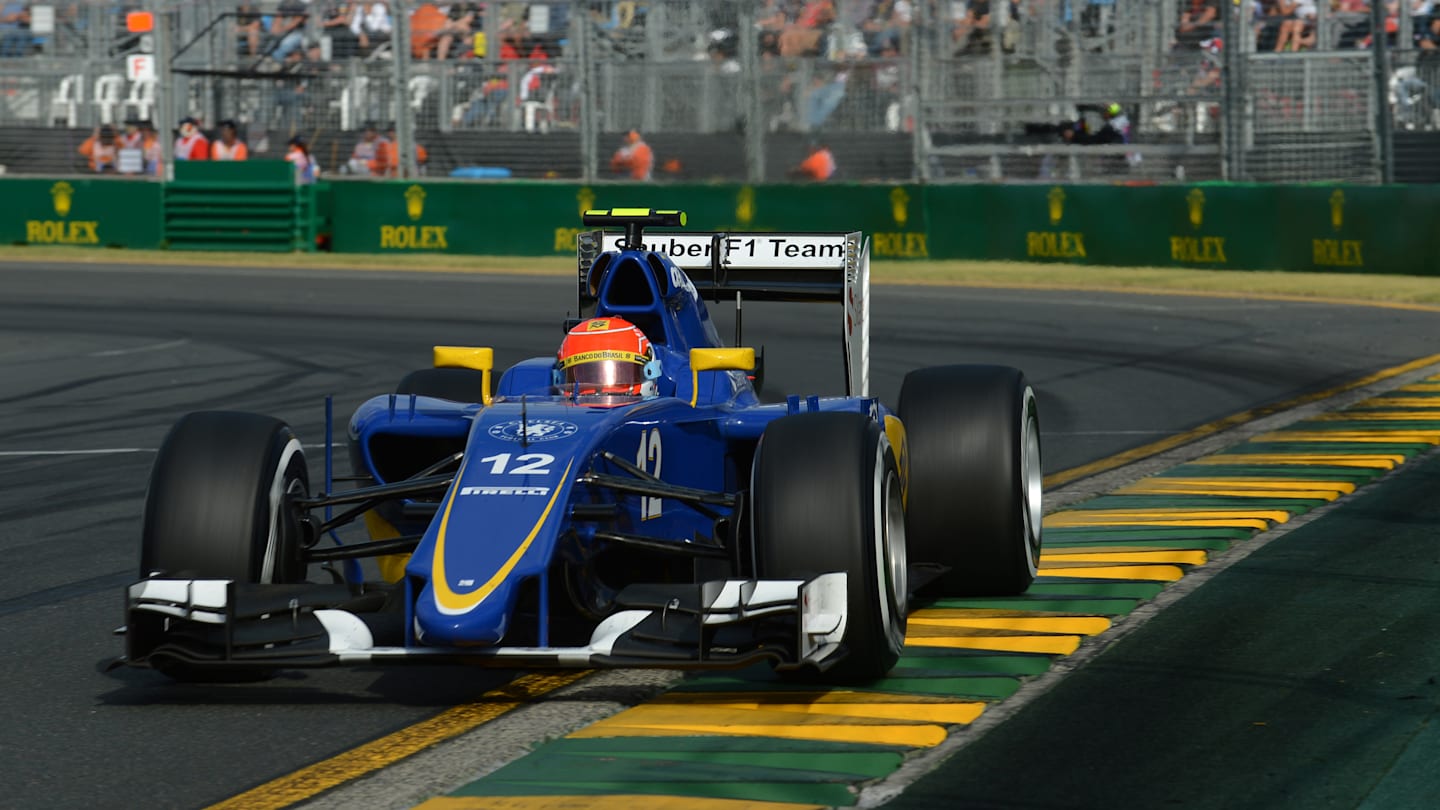
Felipe Nasr (BRA) Sauber C34 at Formula One World Championship, Rd1, Australian Grand Prix, Race, Albert Park, Melbourne, Australia, Sunday 15 March 2015.
Sauber - 22 pts (8th)
Felipe Nasr: 16 pts (12th); Marcus Ericsson: 6 pts (18th) Qualifying head-to-head: 6-4 (Nasr); Race head-to-head: 6-2 (Nasr)
After failing to trouble to scorers in an abject 2014 campaign - their worst since joining the grid in 1993 - Sauber entered the new season with an all-new new driver line-up, a fresh colour scheme and, crucially, a much better all-round package. Where the C33 had been consistently inconsistent, initial testing showed the C34 to be much more predictable in its handling, and it packed more punch too thanks to welcome upgrades to Ferrari’s power unit.
The Swiss team’s headline times in winter testing suggested glory running, but they proved the doubters wrong at the season-opener in Australia when, after an unseemly three-into-two seat squabble involving former test driver Giedo van der Garde was finally settled, rookie Nasr came home a brilliant fifth on his debut. It was to be the first of several stellar outings for the Brazilian, who has scored points on three occasions in the opening 10 races and has more often than not had the advantage over his more experienced team mate, Marcus Ericsson.
Indeed it’s a credit to Nasr that despite Sauber’s tumble down the order since Australia – primarily the result of limited development compared to most of their rivals - the 22-year-old is still ahead of the likes of experienced campaigners Sergio Perez and Pastor Maldonado in the drivers’ standings.
Sauber will add much-needed upgrades in Belgium and Singapore, but whether it improves their fortunes at tracks with a proliferation of medium and high-speed corners - their Achilles Heel - remains to be seen. Points could be very hard to come by.
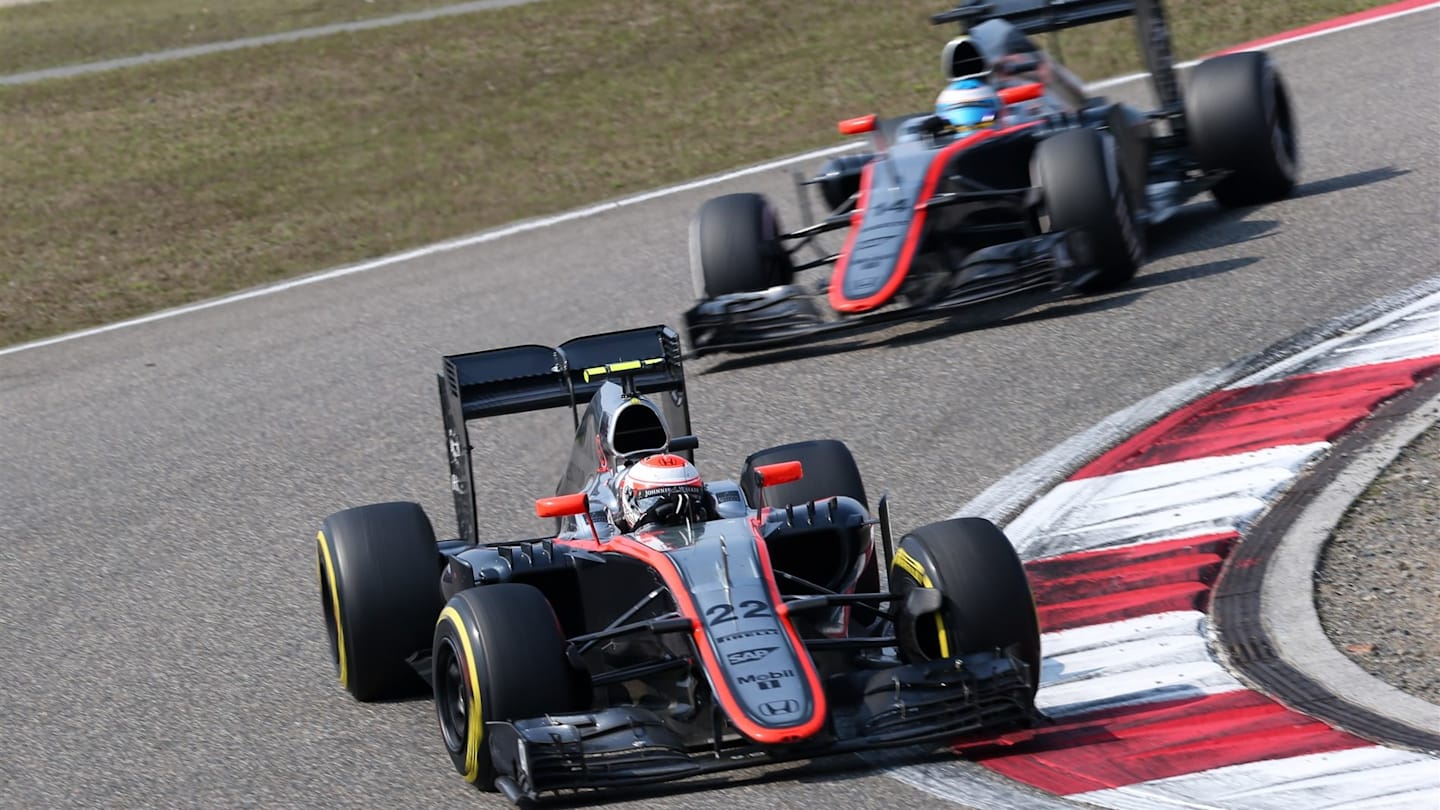
Jenson Button (GBR) McLaren MP4-30 leading Fernando Alonso (ESP) McLaren MP4-30 at Formula One World Championship, Rd3, Chinese Grand Prix, Race, Shanghai, China, Sunday 12 April 2015.
McLaren - 17 pts (9th)
Fernando Alonso: 11 pts (15th); Jenson Button: 6 pts (17th) Qualifying head-to-head: 4-3 (Alonso); Race head-to-head: 2-0 (Alonso)
It’s always dangerous to look to the past for signs of the future, and so it has proved with McLaren and Honda, whose renewed partnership - the subject of considerable excitement pre-season thanks to their crushing dominance in the late Eighties and early Nineties - has underwhelmed spectacularly so far.
From the outset, the unreliability of Honda’s RA615H Hybrid power unit has been the biggest thorn in the team’s side, with worrying fragility forcing a conservative approach that has exacerbated power deficiencies to rival squads and masked any potential strengths in the MP4-30’s chassis.
Somehow, despite the multiple retirements, the litany of prematurely halted practice sessions, and the considerable lack of grunt, McLaren’s enviable all-world champion driver line-up of Alonso and Button remain both upbeat and committed to the cause, even if frustrations have boiled over on the odd occasion.
Both have delivered stellar performances too: Button was impeccable in Monaco where he bagged the team’s first points of the season with eighth, while even with retirements ahead of him Alonso had to be at his relentless best to capture fifth last time out in Hungary.
The Budapest race (Button also came home ninth) was, say Honda, evidence that things are moving in the right direction - though clearly the pace of progress in not nearly fast enough for McLaren’s liking. For their part, McLaren have continued to bring aero upgrades to the car, while Honda have promised more power for the engine-centric races in Belgium and Italy. Whether it’s enough to ensure Alonso and Button are regular point scorers in the second half of the season remains to be seen. If they’re not, expect tensions within the alliance to ratchet up further…
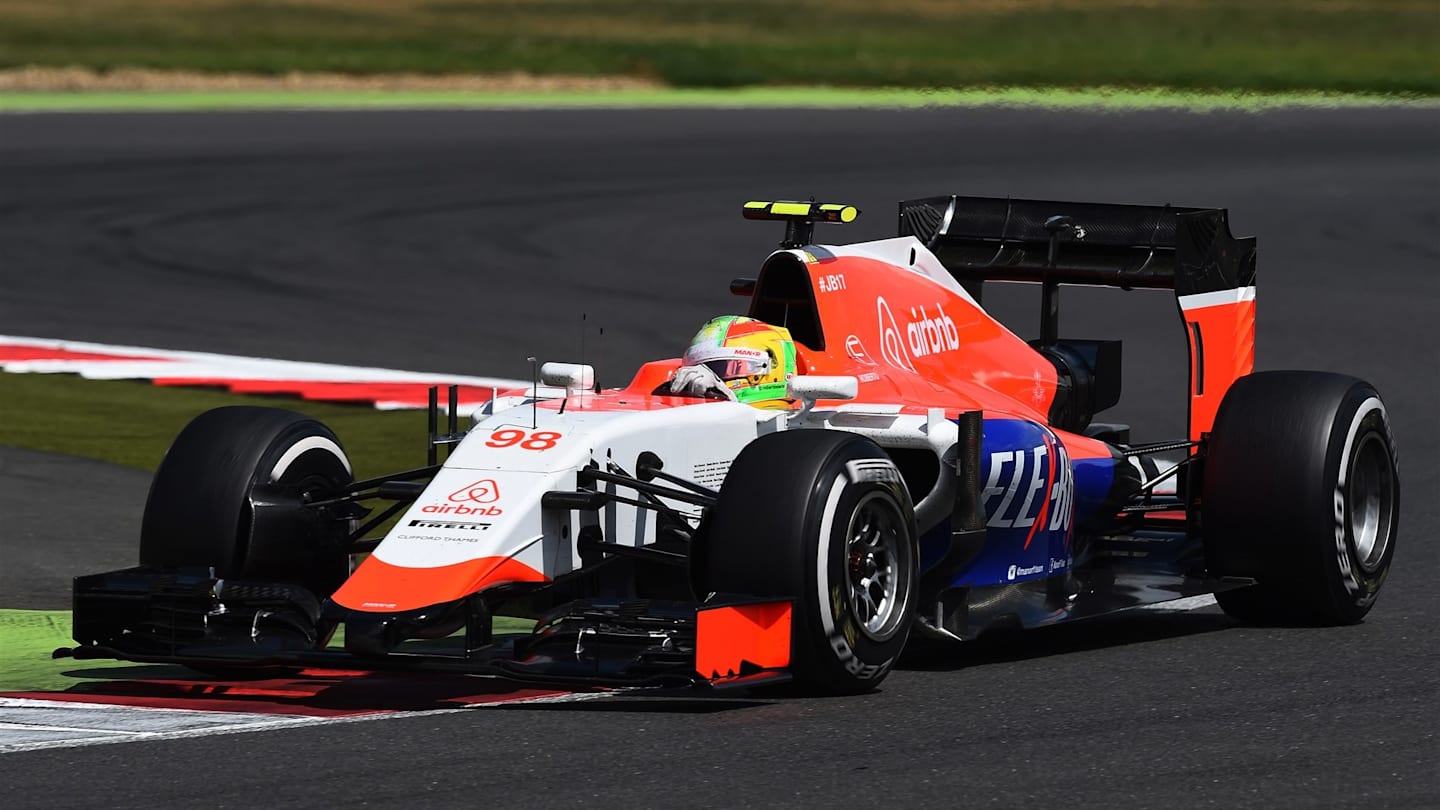
Roberto Merhi (ESP) Manor GP at Formula One World Championship, Rd9, British Grand Prix, Race, Silverstone, England, Sunday 5 July 2015.
Marussia - 0 points (10th)
Will Stevens - 0 pts (20th); Roberto Merhi - 0 pts (19th) Qualifying head-to-head - 5-3 (Stevens); Race head-to-head - 3-3 (Stevens)
Marussia’s main fight was won even before the season began, as new investors rescued the team from the brink. But even after such a dramatic rescue, the season itself has been no fairy tale.
For the team’s part, the message has been clear: 2015 is about consolidation and laying down more solid foundations. A driver line-up of Stevens and Merhi - finalised just days before the Australian curtain opener - has certainly proved solid. Both had the pedigree to deserve the step up, and have pushed each other accordingly, with Stevens using his weight advantage to good measure on Saturdays, but honours completely even on Sundays.
On the plus side, the team have only suffered three retirements so far - not counting the failures to make the grid in Melbourne (both cars) and Sepang (Stevens). Merhi even finished as high as 12th in in an incident-filled race in Britain, albeit two laps off a points-paying position.
But for all that, the team’s intrinsic problems remain. Competing in a year-old car, with a year-old engine, has left them consigned to the back of the grid, while Canada remains the only venue where both men have got within 5 seconds of pole. For all their laudable efforts, don’t expect that to dramatically change in the coming months.
* Head-to-head stats do not include qualifying sessions where one or other driver did not compete or races where one or other driver was not a classified finisher.
YOU MIGHT ALSO LIKE

Video WATCH: What we learned from the second day of pre-season testing in Bahrain

Video HIGHLIGHTS: Watch the action from the first day of pre-season testing for 2025 in Bahrain
FeatureF1 Unlocked From a potential pecking order to a scintillating Sainz – What we learned from Day 2 of pre-season testing in Bahrain
Report Sainz tops the timesheets ahead of Hamilton on Day 2 of pre-season testing in Bahrain
